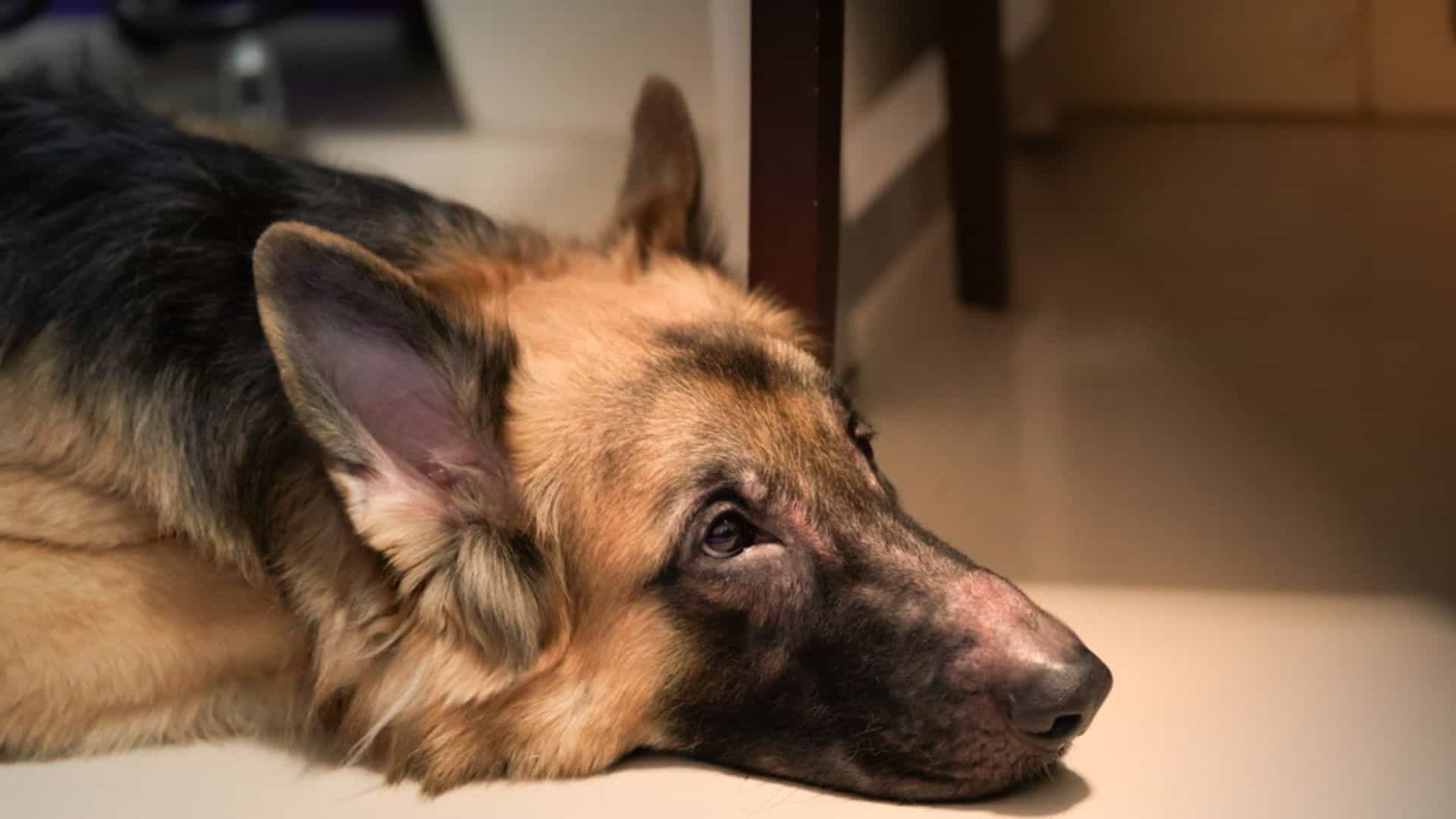
Bạn tôi đã gọi cho tôi sáng nay và cô ấy thực sự lo lắng. Cô nhận thấy chú chó chăn cừu Đức ba tuổi của mình, Claus, bắt đầu rụng tóc. Anh ấy không rụng lông, cũng không phải trong mùa giải. Cô ấy đang nói về những đoạn tóc bị mất trên áo khoác của Claus, để lại những mảng hói.
Tất nhiên, cô ấy đã gọi điện cho bác sĩ thú y của họ và họ đã sắp xếp một cuộc kiểm tra vào sáng mai. Tuy nhiên, Lydia không thể giữ bình tĩnh trong 24 giờ. Cô ấy nói: tốt hơn nên cho tôi biết chuyện gì đang xảy ra hoặc tôi sẽ lên Google và phát hiện ra của tôi mắc một số loại bệnh đã tuyệt chủng!
Tôi đã phải nhảy vào và giúp cô ấy thư giãn tâm trí. Không đơn giản để tìm ra lý do tại sao GSD đột nhiên rụng tóc.
Có rất nhiều lý do đằng sau rụng tóc, và chúng tôi sẽ đề cập đến những lý do phổ biến nhất.
Hãy bắt đầu trước khi mọi thứ trở nên quá nhiều lông.
1. Phản ứng dị ứng
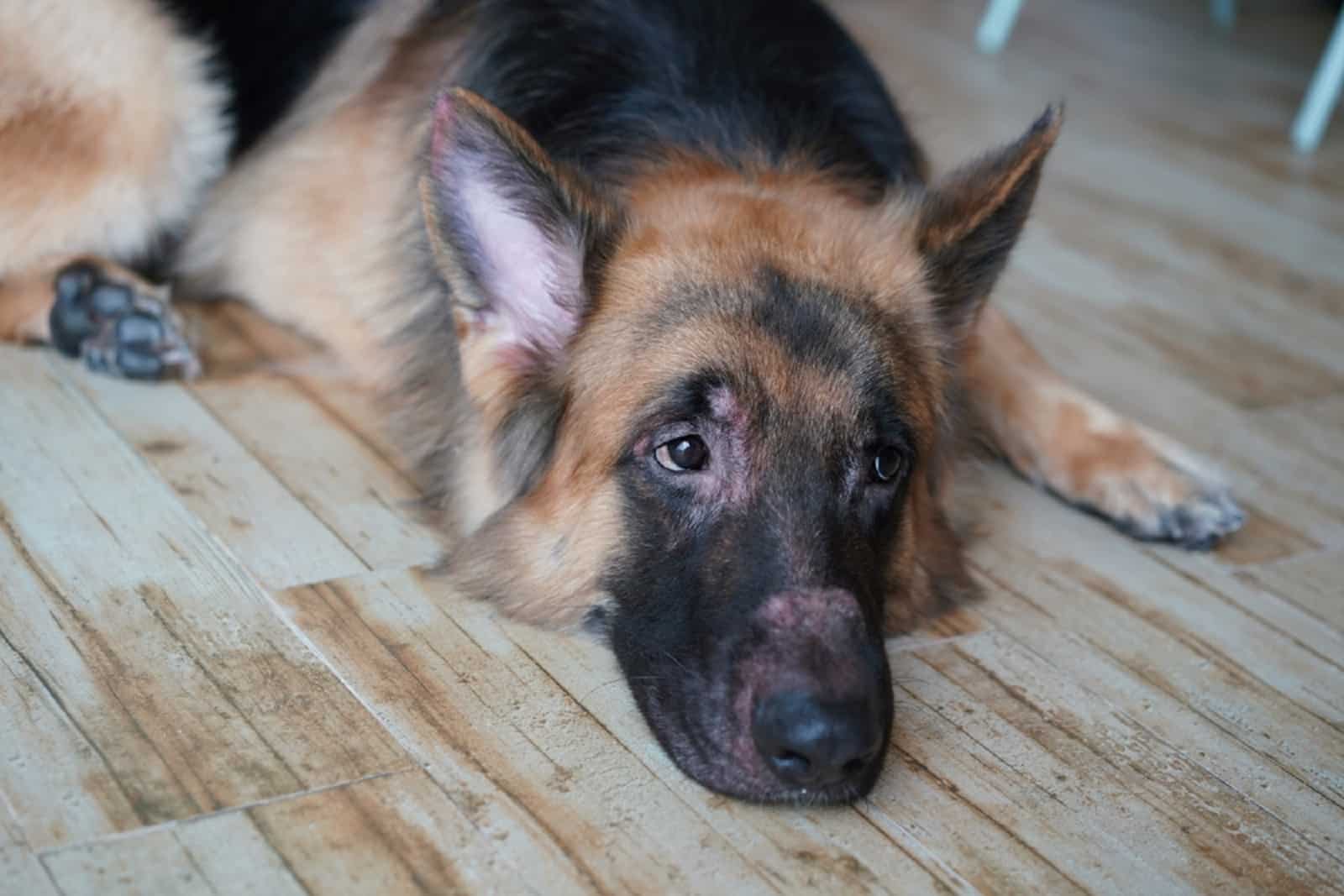
Nếu đó không phải là mùa rụng lông và Chó chăn cừu Đức của bạn vẫn bị rụng tóc quá mức, thì bạn có thể nghi ngờ phản ứng dị ứng là lý do đằng sau nó. Trong hầu hết các trường hợp, họ thực sự là.
But, allergic reactions are such a wide term! They can range from food-borne allergies to environmental, respiratory allergies, etc.
Usually, German Shepherds get food allergies. This dog breed is quite prone to reactions if their food contains a lot of grains. Sometimes, certain proteins, such as chicken and the steroids they’re sometimes fed can trigger allergies. |1|
However, don’t be surprised if your GSD gets reactions to pollen, mold, or dust. Those reactions are pretty standard, too.
You can easily spot an allergic reaction if your dog has had other symptoms such as itchiness, swelling, redness of the skin, dryness, and constant licking of the affected area.
2. Bacterial Or Fungal Infections
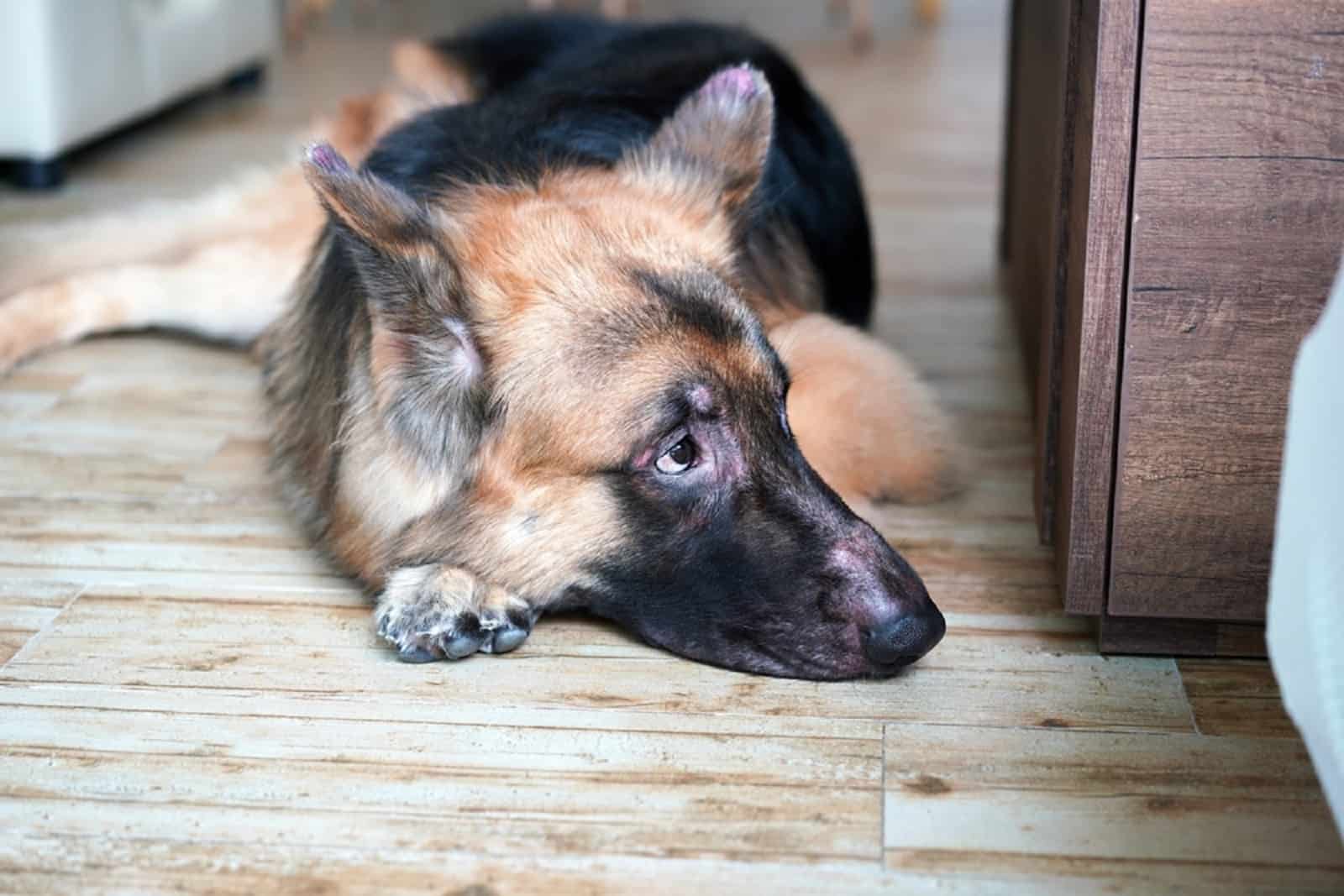
Irritated and red skin that seems to itch all the time?
Red or brown patches on the skin where the hair is missing?
Terrible odor coming from your dog’s skin surface?
Yep, those are infections caused by bacteria or fungi!
Ringworm is the most common pest that causes fungal infections with dogs. |2|
I’m sorry, but you shouldn’t even try to treat such infections alone at home. Rush to the vet if you notice these symptoms!
3. Parasitic Infections
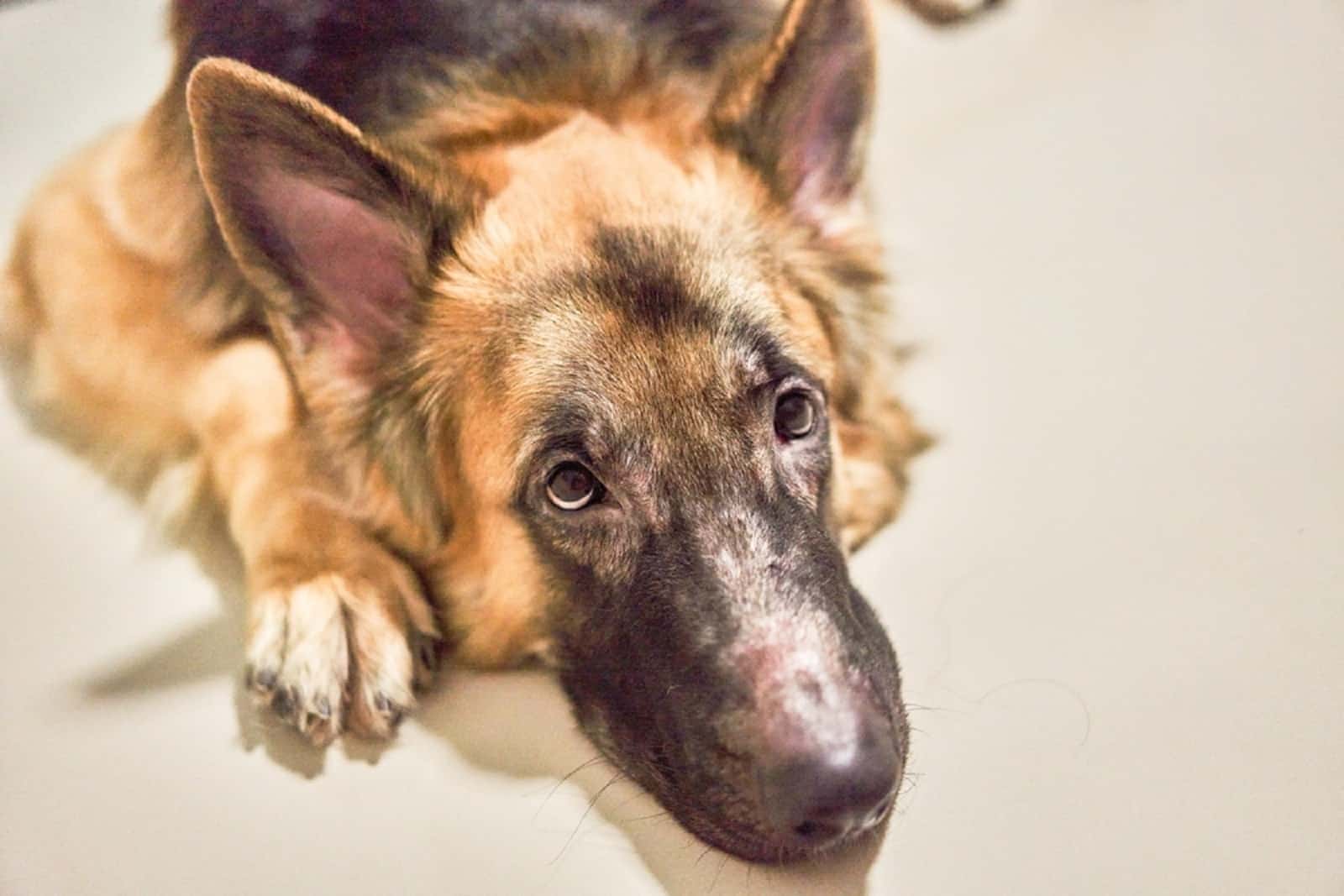
Fleas. Mites. Ticks.
We hate them all!
Those nasty pests are super hard to get rid of no matter how well we take care of our dogs.
Constant itchiness and scratching is an obvious sign your dog is dealing with fleas or mites, sometimes even ticks. In such cases, baths are in order, as well as a visit to the vet who will prescribe pills so they don’t catch any parasites, i.e., anti-tick pills.
Of all the listed parasites, fleas are somewhat the least dangerous. But, if your dog has mites, especially demodex mites, it can turn into quite a problem. Those mites lead to a condition called demodectic mange, and it can be contagious. |3|
4. Stress
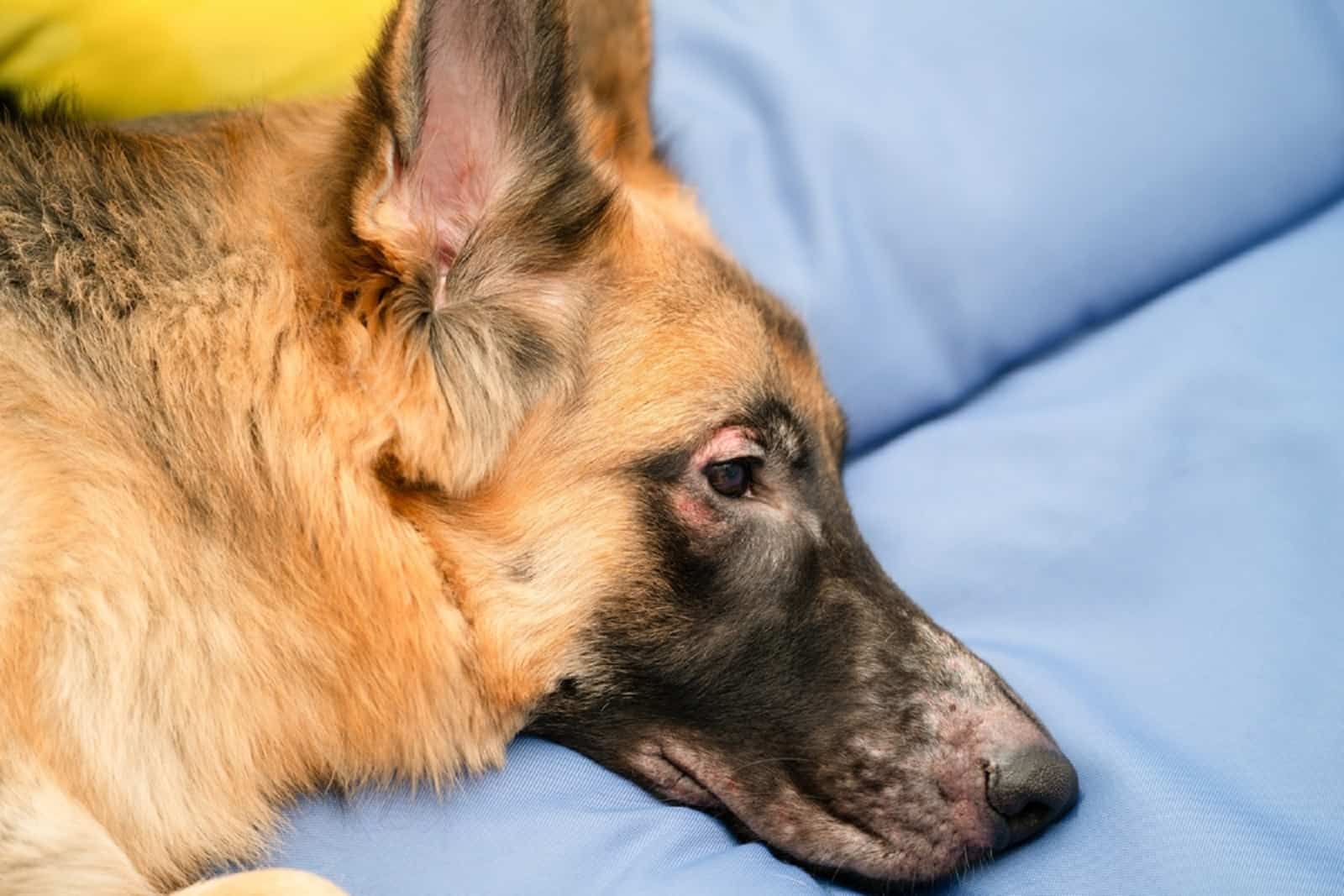
Oh, stress as a common factor for all kinds of health problems becomes pretty obvious. Seems like everyone these days is under a lot of stress, including our canine friends.
What can I say? Anything could cause stress with dogs, even the slightest change! Did you change your living arrangement? Did you bring someone new into their life? Did you move, maybe change their food or treats?
German Shepherds are sensitive despite their tough appearances. Even the tiniest change could make them lose it.
5. Hormonal Changes
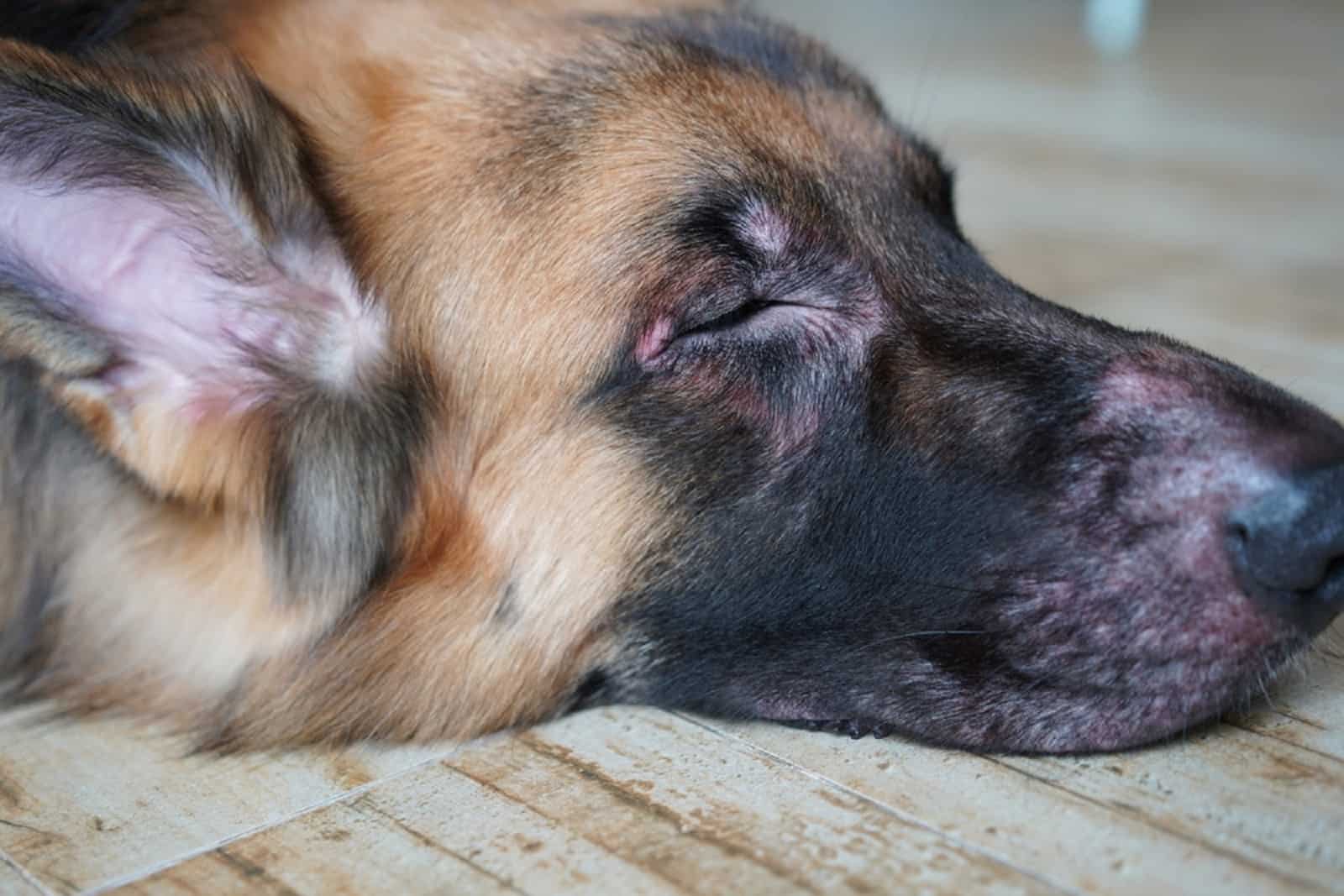
Sadly, German Shepherds can develop issues with their thyroid and adrenal glands. Those conditions must be diagnosed by a vet before giving your dog any sort of therapy.
If your German Shepherd suffers from health problems like hypothyroidism, that can be the reason behind its hair loss. Hypothyroidism causes a bunch of issues and messes up the dog’s entire wellbeing. |4|
Meds and dietary changes are in order or else your dog will start losing more hair, become obese, lack energy to do anything, etc.
6. Lack Of Nutrients
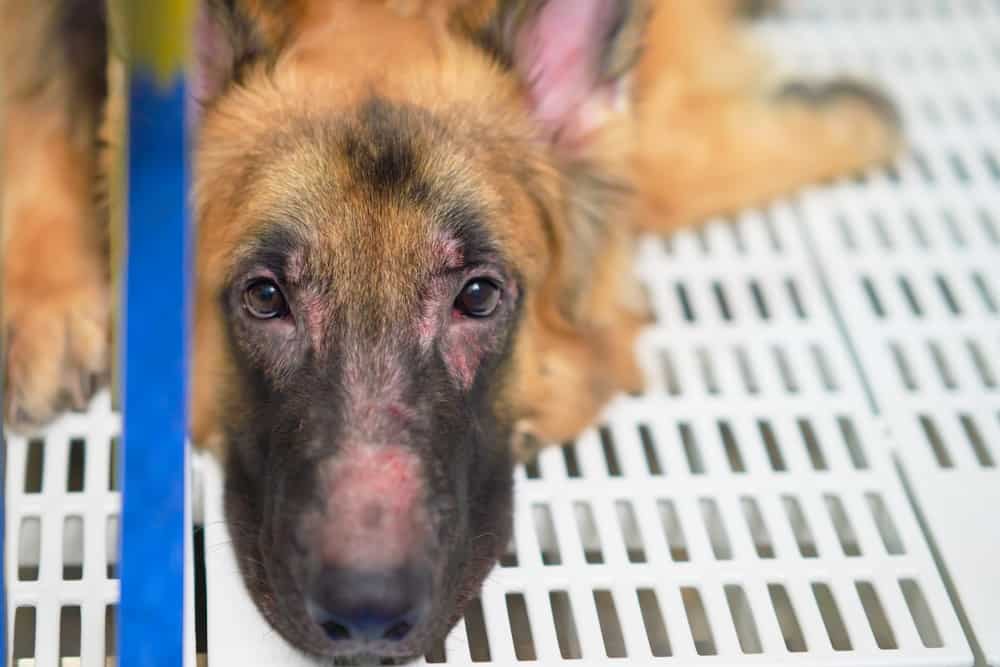
I’m not saying my friend, Lydia, isn’t feeding her dog good dog food, but still… Formulas change, ingredients may lack in one of the kibble batches, something might be going on inside the dog that requires additional nutrients, and there you have it.
Lack of nutrients is another popular reason why dogs lose patches of hair all of a sudden.
Goodies like vitamins, minerals, keratin, and amino acids are the first suspects if you think your dog is lacking nutrients. In this case, you either switch to a premium formula or ask your vet to prescribe some supplements that will increase the quality of your dog’s coat.
7. Severe Illnesses
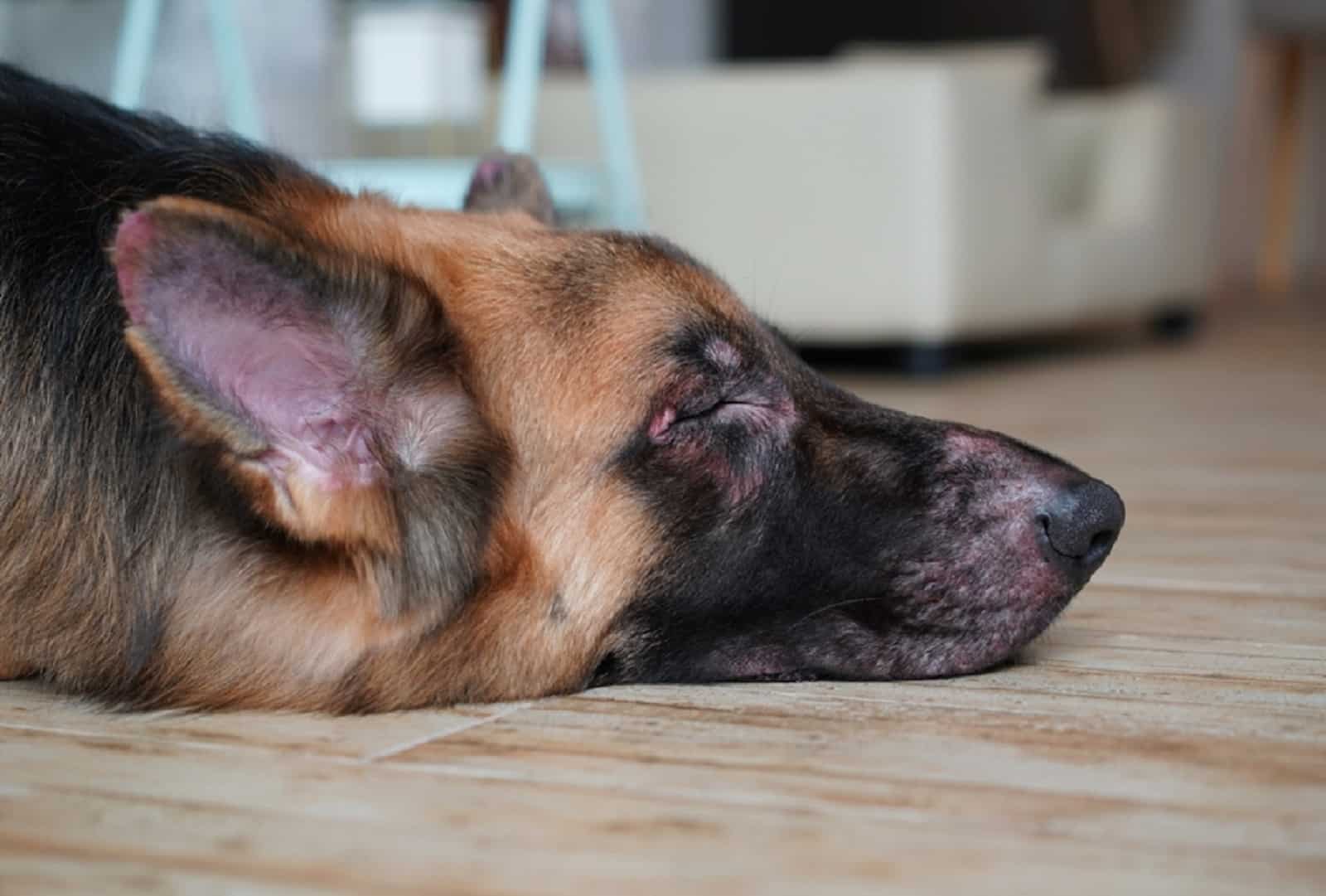
Lastly, a reason we all dread. Severe illnesses.
Nobody wants to hear their dog might be suffering from a life-threatening illness, but that’s sometimes the case behind sudden shedding.
For example, some cancer forms are characterized by hair loss, as well as autoimmune diseases, and other conditions such as kidney failure or Cushing’s Disease.
If everything else I mentioned checks out fine, and your dog isn’t allergic, under stress, lacking nutrients, or under infections, it might be time to run some further tests. It’s not only about your dog’s coat; it’s about its health!
A healthy dog is a happy dog, and only a happy dog means a happy hooman!
DISCLAIMER: As much as I’d want to help you, I’m not your dog’s vet. I can give you general insight into what’s causing the hair loss, and help you figure out what your dog’s having. However, for any additional help, advice, or treatment, you should consult your vet.
Không ai có thể cho bạn biết trực tuyến những gì sai với của bạn, chẩn đoán chính xác và điều trị đúng. Đó là lý do tại sao chúng tôi có bác sĩ thú y… Bạn bè của chúng tôi có nhu cầu!
Nguồn:
|1| Rakshanda Bhagat, Amir Amin Sheikh, VS Wazir, Aditya Mishra và Uttarani Maibam. Dị ứng thực phẩm ở chó: Một đánh giá. 2017.
2| A.I. Wright. Giun đũa ở chó và mèo. 1989. Bộ KH&ĐT
|3| K.P. Thợ làm bánh. Quan sát về mange demodectic ở chó. 1968. DOI
|4| D.L. Panciera. Suy giáp ở chó: 66 trường hợp (1987-1992). 1994. DOI